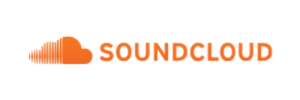Framework AARRR
The AARRR framework, also known as "pirate metrics," is a customer-centric approach to understanding user behavior and product growth. Developed by startup investor Dave McClure, the framework breaks down the customer lifecycle into five key stages: Acquisition, Activation, Retention, Revenue, and Referral.
By focusing on these five areas, businesses can gain valuable insights into how users interact with their product and identify opportunities for improvement. The AARRR framework is particularly useful for marketers, product managers, and growth hackers looking to optimize their product's trajectory and drive sustainable growth.
Implementing the AARRR framework allows companies to:
Understand user behavior at each stage of the customer journey
Identify bottlenecks and areas for improvement
Set clear, measurable goals for each stage
Develop targeted strategies to optimize user experience and drive growth
By tracking and analyzing key metrics associated with each stage of the framework, businesses can make data-driven decisions to improve their product and grow their customer base. The AARRR framework provides a comprehensive, user-centric approach to understanding and optimizing product growth.
Applying the AARRR framework to drive growth
The AARRR framework provides a structured approach to optimize each stage of the customer journey. Here's how you can apply it:
Acquisition: Attract the right users
Identify your target audience: Focus on attracting users who are most likely to benefit from your product.
Optimize your acquisition channels: Experiment with different channels to find the most effective ones for your target audience.
Track acquisition metrics: Monitor metrics like cost per acquisition (CPA) and conversion rates to measure the effectiveness of your acquisition efforts.
Activation: Deliver value quickly
Simplify onboarding: Make it easy for new users to get started with your product and experience its value.
Provide guidance: Offer tutorials, tooltips, or in-app guidance to help users navigate your product and discover key features.
Measure activation metrics: Track metrics like activation rate and time to value to identify areas for improvement.
Retention: Keep users engaged
Continuously improve your product: Use user feedback and data to identify and address pain points and improve the user experience.
Personalize communication: Tailor your messaging and offers to individual users based on their behavior and preferences.
Monitor retention metrics: Track metrics like churn rate and engagement frequency to identify trends and take action to improve retention.
Revenue: Monetize effectively
Develop a clear monetization strategy: Determine the best pricing model and revenue streams for your product.
Optimize pricing: Experiment with different pricing tiers and offers to find the sweet spot that maximizes revenue without sacrificing user growth.
Measure revenue metrics: Track metrics like MRR, ARR, and ARPU to assess the health of your business and identify opportunities for growth.
Referral: Leverage word-of-mouth
Create a referral program: Incentivize users to refer their friends and colleagues to your product.
Make sharing easy: Integrate sharing features into your product and provide users with pre-written messages and social media posts.
Track referral metrics: Monitor metrics like viral coefficient and referral conversion rate to measure the effectiveness of your referral efforts.
By applying the AARRR framework and focusing on the right metrics at each stage, you can systematically optimize your product and drive sustainable growth. Remember to continuously analyze your data, experiment with different strategies, and iterate based on your findings to maximize the impact of your efforts.
Implementing the AARRR framework
Setting clear goals for each stage of the AARRR framework is crucial. Define what success looks like at each step of the customer journey. This helps align efforts and measure progress effectively.
Identifying and tracking the right metrics is key to implementing the AARRR framework. Determine the key metrics tied to each stage—acquisition, activation, retention, revenue, and referral. Focus on quality over quantity by selecting a few key metrics that matter most.
Analyzing data for insights and patterns is essential in the AARRR framework. Look for bottlenecks and opportunities in the customer journey. Use data to identify areas for improvement and inform decision-making.
Iterating and refining strategies based on data is a continuous process in the AARRR framework. Use insights to make data-driven decisions and continuously optimize each stage. Employ A/B testing to improve metrics and drive better outcomes.
To effectively implement the AARRR framework, consider these challenges and solutions:
Tracking the right metrics: Focus on a few key metrics that align with your goals.
Getting accurate data: Set up proper tracking systems and ensure consistent data flow.
Cross-team alignment: Hold regular meetings to discuss AARRR metrics across the company.
Turning data into action: Designate team members to execute on insights and use experimentation to improve metrics.
By following these steps, you can harness the power of the AARRR framework to make informed decisions. A comprehensive experimentation platform can streamline the process—integrating with data warehouses, enabling feature flagging and A/B testing, and transforming raw data into actionable insights.
Loved by customers at every stage of growth














